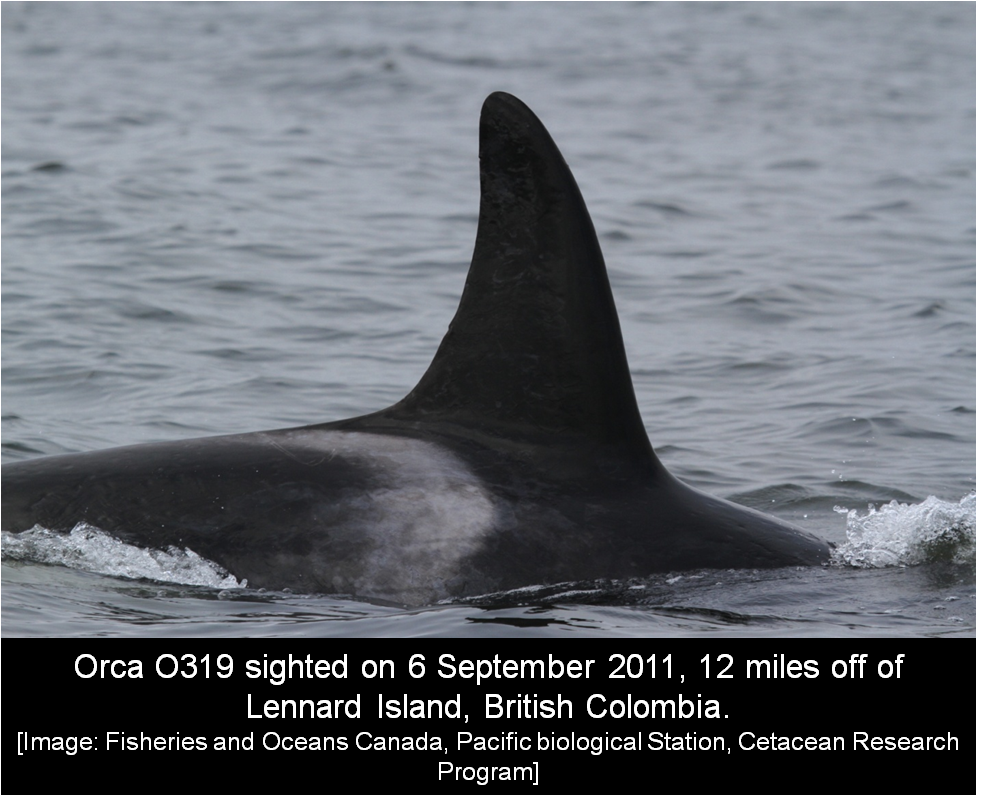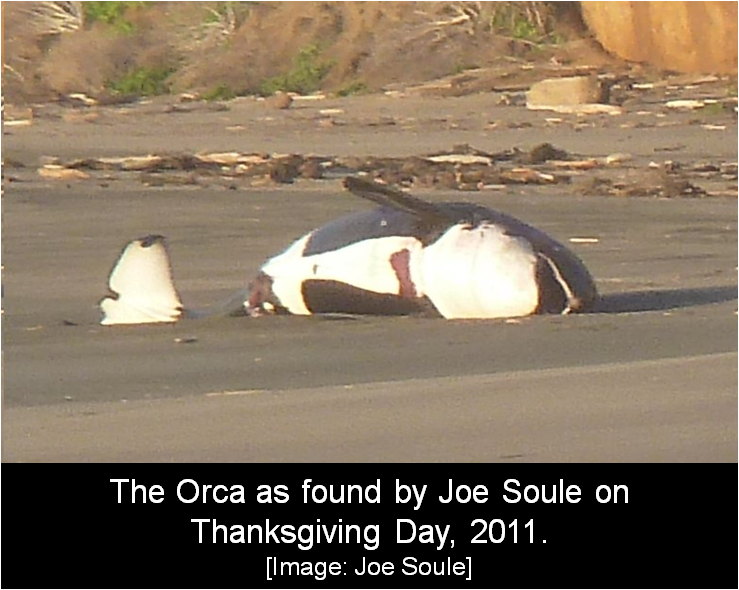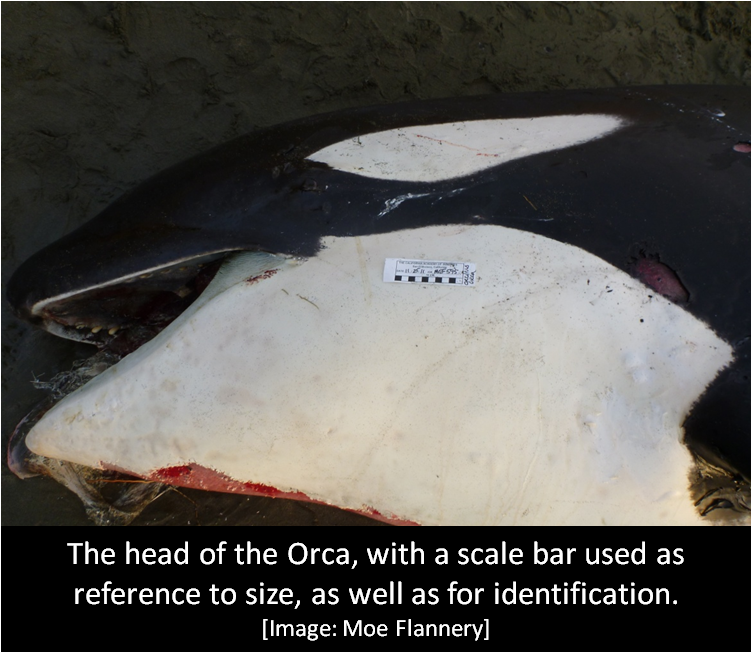We have a very exciting project starting this week (May 10th) in the Piazza: an articulation of an orca skeleton. Articulation, or connecting the bones together, is how we display skeletons so that we can see what an animal looks like without all of its other parts (muscle, skin, etc.). It is a process that’s usually done behind the scenes, but we decided it would be a great opportunity for the public to learn about an interesting specimen as well as a unique preparation process. First of all, how did we get this orca skeleton?
In November of 2011, the day after Thanksgiving, we received a call that there was an orca that washed up dead on a beach in Point Reyes National Seashore (Marin County). Moe Flannery, the Collections Manager of Ornithology & Mammalogy (birds and mammals), who coordinates our marine mammal stranding response between Bodega Bay and Año Nuevo State Park, got a team together to go take photographs, measurements, and skin, muscle, and blubber samples that are required for each dead marine mammal stranding.
A team returned the next day to perform a field necropsy, which is an autopsy performed on an animal. There was only time to complete the necropsy and remove the skull, which was then moved up the beach towards the base of the cliffs, to make sure it didn’t wash away with the tide overnight. We keep a part of all specimens (marine mammals, birds, and land mammals), called a “voucher,” for our research collection. In some cases that means the entire skin and skeleton, while in other cases it may only be a wing or skull. Moe knew that she at least wanted to keep the skull of the Orca, which is why it was secured in a safe place overnight.
Stay tuned to read about how we found out about the Orca’s identification number and how we came to the decision to keep the entire skeleton!
Laura Wilkinson
Curatorial Assistant and Specimen Preparator
Ornithology and Mammalogy
All marine mammal stranding activities were conducted under authorization by the National Marine Fisheries Service through a Stranding Agreement issued to the California Academy of Sciences and MMPA/ESA Permit No. 932-1905/MA-009526.


